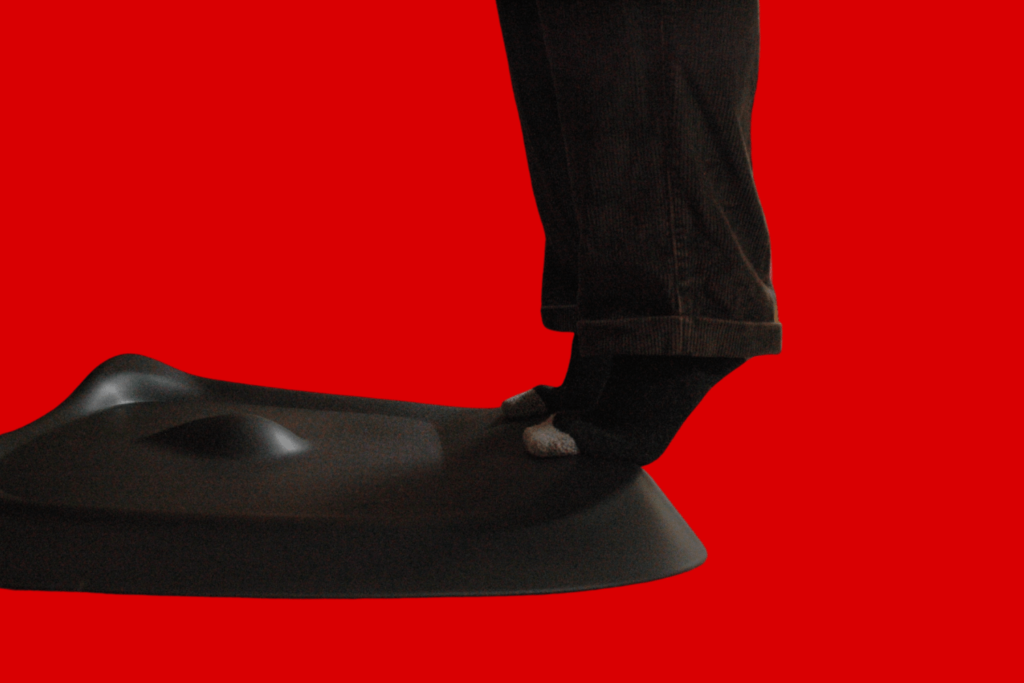This post was last updated on January 12th, 2021 at 06:18 pm
Standing desks took off after the 2009 publication of Mayo Clinic Dr. James Levine‘s book, “Move a little, lose a lot.” Suddenly, office workers everywhere were questioning their lifestyles, which no longer seemed healthy. Prolonged sitting, Levine argued, sets the stage for hypertension, diabetes, obesity and other chronic ailments. If sitting is bad, employees figured standing desks are part of the solution.
Fast forward 12 years, and researchers haven’t found conclusive evidence that standing desks necessarily lead to better health outcomes, though some small studies have shown promising results.
Six years of using a standing desk
Here’s what six years of using a standing desk taught me: It promotes an active lifestyle. Working from a standing position creates an easy transition to walking. It’s also easy to stretch and exercise from a standing position. For me, a standing desk isn’t an end in itself. Instead, it reflects a mentality that carries over into other parts of life. The standing desk helps create momentum for me to stand while doing other things outside of working at my computer.
That being said, I think most people interested in switching from sitting to standing should ease into it. Don’t go from sitting eight hours a day to attempting to stand eight hours a day. There is an adjustment period for most people. My situation was unique. When I started using a standing desk six years ago it was because I couldn’t sit.
I had suffered a back injury playing volleyball, and nothing—not sitting, sleeping or standing—felt comfortable. Standing, however, was the least uncomfortable position, and so I rigged up a standing desk at my work with whatever I could find, including some cardboard boxes. When my back healed and sitting became comfortable again, I decided not to return to the sitting way of life. I converted to a standing desk for the long haul and traded the cardboard boxes for something more permanent.
Here’s a list of 5 things I’ve learned about standing desks. Remember, using a standing desk isn’t just about standing. Lots of factors come in to play—from office culture to individual physical limitations—that will determine whether a standing desk is right for you.
01 Focus on the ergonomics
If you feel pain in your neck, wrists, or other part of your body while you’re at a standing desk, it will get old fast. For me, keyboard placement is crucial. If my keyboard is too high or too low, my fingers and arms start bothering me. (I use an ergonomic keyboard, which splits into two parts and tilts at an angle that conforms to my wrists.) Whatever setup you pick, make sure you can customize it. If you can’t adjust the position of your screen and keyboard to fit your body, the discomfort (on top of the normal fatigue you might feel in your feet) is likely to discourage you.
When you install your standing desk, make sure your screen and keyboard are at optimum levels. Don’t tolerate minor irritations because transitioning to standing is a big enough challenge. If I must bend my neck a fraction of an inch too high or too low to view my computer monitor, that’s not good enough for me. I will continue tweaking my setup until it feels near-perfect. Do whatever it takes to eliminate any physical discomfort.
02 Wear really good shoes or inserts
As a man, I’m thankful I’ve never felt pressure to wear high heels. I cannot imagine working at a standing desk wearing a pair of them. Even in regular dress shoes, my feet have been miserable. When I started using a pair of high-quality shoe inserts, my feet started feeling much better. Just remember to replace your inserts once in a while. My inserts are supposed to be replaced after about a year.
At my home office, I work in bare feet or socks while using an anti-fatigue mat. I’ve had no problems and prefer the unconstrained feeling. At the same time, because I’m at home, I have a lot more control over whether I need to be at my desk. I don’t spend as many hours working in one place as I did in an office setting, where it can be more difficult to break up a work schedule.


03 You won’t get one if you don’t ask
I worked at a two different offices where outfitting employees with standing desks wasn’t a high priority, which I think is typical. I felt like I needed a good reason for having one, and I had my back injury to present as exhibit A. I think it’s silly to have to “justify” getting a standing desk, however. Sitting less is healthy for everybody, and employees shouldn’t have to ask for one, in my opinion.
Money is likely the biggest barrier to companies offering standing desks to every employee. However, that doesn’t mean your boss won’t spring for one. It won’t hurt to ask. The worst thing that will happen is your employer will say no. In that case, you’ll have to consider buying one yourself (if your employer permits it).
At my two former employers, my standing desks were a mix of their equipment and my DIY adjustments. With both setups, I had enough space to do non-computer work at a traditional desk, where I could sit. I probably sat one hour a day and stood for seven. I wouldn’t recommend a 1:7 ratio for most people starting out, however. Studies have examined this question and recommend sitting between 10 and 30 minutes each hour.
The ideal standing desks convert easily into a sitting one. These can get expensive. If you give yourself an option to sit, make sure you’re creating reminders or incentives to stand. Some people with convertible desks tend to keep them in sitting mode.
04 Don’t feel like you have to spend a lot
Standing desks can cost hundreds of dollars. It is possible to create a comfortable standing station for $100 or so, depending on the materials available to you. Regardless of how much you spend, your top priority should be to create an ergonomically friendly setup. Don’t try to save money at the expense of comfort. Otherwise, you’ll have defeated the point of standing.
On the other hand, it’s possible to spend a bunch of money on a standing desk that can’t be properly adjusted to suit your body. I’ve seen expensive standing desks that only allow the keyboard to be placed in one spot, with minimal adjustments. If I bought a desk like that, I’d be wasting hundreds of dollars. My advice: Focus less on price and more on the setup’s flexibility. This is especially important for tall people such as myself.
05 Add some fun accessories
One reason standing works for me is that I like to fidget. Even at a traditional desk, my knees hop up and down and my chair swivels this way and that. A standing desk won’t guarantee you move more, but I’ve found it makes moving easier. With a standing desk, I’ve taken fidgeting to a whole new level.
To fight standing fatigue, I recommend an anti-fatigue mat with ridges. I like standing on these ridges and flexing my feet and calves. I can do these exercises without disrupting my workflow. Between writing sentences, I sometimes do a set of squats. Also, you’ll help your circulation by exercising your feet and legs. Your heart pumps blood through your body, while muscle movement in your feet and legs assists with circulation.
The other accessory I enjoy is a balance board. It takes some practice, but once you get used to it, you can work while balancing on the board.
Adding an accessory can help break up the monotony of standing. If you don’t have an accessory, you can still do leg and feet exercises, of course. However, I find the anti-fatigue mat and balancing board add both comfort and interest.
If you’re unsatisfied at first, keep making adjustments
If you’re unsatisfied with your standing desk at first, don’t give up. Continue to make adjustments. It took me a few years to discover my ideal setup, and I’m still looking for ways to improve my experience. Many factors will determine whether you continue using a standing desk. Ultimately, you have to feel comfortable standing. So take your time to get your setup just right.
Finally, if you work in an office setting, there’s the office culture to consider. You might feel isolated if you’re the only one using a standing desk. I think there’s truth to this Onion headline: “Report: Standing at work can increase coworkers’ disdain up to 70%.” “By simply switching from a traditional desk to a standing desk, we found that individuals experienced much longer and fuller looks of silent loathing from their colleagues,” the article states. While this piece of satire might exaggerate reality, I’d argue there’s truth to it.
Nobody has ever criticized me for having a standing desk, and you probably won’t experience any overt hostility, either. Just keep in mind that sitting is ingrained in office culture. Even as standing desks have become more mainstream, there’s still plenty of resistance, perhaps even subconscious.
When you start standing more, you’re sticking out from the crowd. Anytime you stick out, somebody isn’t going to like it. You need to have confidence in your decision. Let the sitters sit. You do your thing. Don’t apologize for standing.
You’re not standing to stand out. You’re standing because it makes you feel better.

